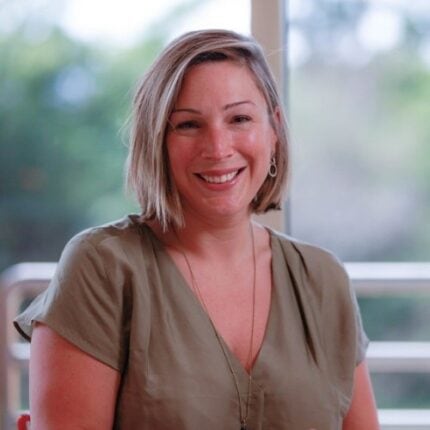Earlier this month, Clearing Plus was featured as part of the Government’s announcement on its support package for universities, and lots of discussion has followed about how it’s going to be used. It’s for students without a place – either because they didn’t achieve the grades required for their original choices, applied late, or changed their mind and no longer have a confirmed place.
There are usually around 35,000 courses in Clearing for unplaced applicants to consider, and while some know exactly what they want to do and where they want to go (and will get on the phone to a university or college), many don’t know what’s available to them with the qualifications they have. Clearing Plus is designed to help those who need it, by giving them a personalised list of potential places, and the option to register their interest online with participating universities and colleges.
While Clearing Plus is new, it builds on work UCAS has been doing for a number of years to drive personalisation and expand student choice. It utilises UCAS’ advanced data science capabilities to show unplaced applicants a data-driven list of available opportunities, based on what students like them have taken in the past. Additionally, it allows providers to define the students they want to reach, including targeting by measures of disadvantage.
Clearing for today’s students
The applicant cohort has evolved in recent years, and today’s 18 year olds have grown up in the world of Amazon and Netflix. They expect slick and personalised services in all aspects of their lives, and major decisions on their educational journey are no different. Clearing Plus is a step towards this, building upon increased personalisation for UCAS applicants. This started with our direct contact service (DCS) five years ago, where we supplied universities and colleges with contact details of unplaced applicants, and more recently, in 2019, with the UCAS Hub helping students research their options before applying.
Clearing Plus presents a list of personalised suggestions to an unplaced applicant at the time they need it most. It continues to build on the increasingly digital nature of Clearing, matching those without an offer or place, to courses that have spaces – transforming the Clearing experience. It runs alongside the main Clearing service, with course vacancies in our search tool, for current applicants and anyone who hasn’t yet filled in an application.
Clearing Plus takes the next step in a more targeted Clearing journey, by putting provider and student on an equal footing. It incorporates feedback from applicants and admissions teams to introduce a service that employs a new digital interface for both providers and students.
Through these interfaces, providers can choose to define their acceptance criteria, and students have the power to express an interest in a course before the university receives their details. The process has been streamlined for everyone, and is more efficient for providers because it’s no longer just about whether an applicant is qualified, but also if they are interested in them specifically.
A provider’s perspective
David Winstanley, Director of Global Recruitment and Admissions at University of Southampton explains how he thinks it’ll be used: ‘At Southampton, we’re expecting it to act as a shortcut for unplaced students to find the right course for them, and assist them in finding any vacancies we have without having to trawl through endless listings and websites. We’re a comprehensive university with a large number of programmes, each with their own entry requirements, and getting a clear message about this to applicants in the fast-paced environment of Clearing can be challenging. Clearing Plus will help students focus on those programmes they’ve the best chance of being admitted to, and help providers pinpoint suitable students.
Of course, where we have vacancies, students will still be able to join us in the more traditional way, via our telephone lines or online enquiry form. We expect the best students will use both the new and established routes. As with all innovation in admissions that have been introduced over the years, we’ll be keeping a close eye on how it impacts on applicant behaviour and choices.”
Why now?
The uncertainty that is part of all of our lives, and is being acutely felt by providers and students as they contemplate Confirmation and Clearing decisions this year, has understandably led to questions about whether Clearing Plus is the right tool to introduce in this cycle.
The structured choice that Clearing Plus will offer students is perhaps needed even more in 2020. Students have been apart from their teachers and advisers for many months, and if they do find themselves unplaced in Clearing, or have changed their mind, Clearing Plus can help clarify options and expand choice. Clearing Plus offers digital support to students at a time when physical support may not be there.
Clearing Plus is not a tool to promote students changing their minds. Possible matches aren’t shown unless they don’t have a place, and this is a tool that in any year is meant to reduce friction that could arise as students consider their options.
When a student meets the terms of their offer, they are placed and form a contract with the accepting provider – there is an assumption that the student has come to the end of their UCAS journey. However, circumstances can inevitably change, and every year a small number of students want to change direction late in the cycle. This has always happened, and their motivations are varied – ranging from academic stretch, change in course choice, or a change in their personal circumstances. Clearing Plus is also designed to support these students in being more informed in their decision making.
By switching from DCS to Clearing Plus, applicants are more empowered with personalised, meaningful options available to them as soon as they are unplaced. Both students and providers stand to benefit significantly from this innovation.
This article is published in association with UCAS.













where is the help now colleges and schools are closed to help with applying for clearing? . struggling to navigate alone is a nighmrae for dylexic student with no support.
no collge or school open to students to get help with disabilites to go on to further their edication
no help with navigating wordy on line applications
its putting disabled and supported learning students at a disdvantage.
Hi Helen
Please send us a message on:
Twitter @ucas_online
Facebook http://www.facebook.com/ucasonline
or email us too customersupport@ucas.ac.uk
and we’ll help you with your application.
How much did UCAS pay for this advert?